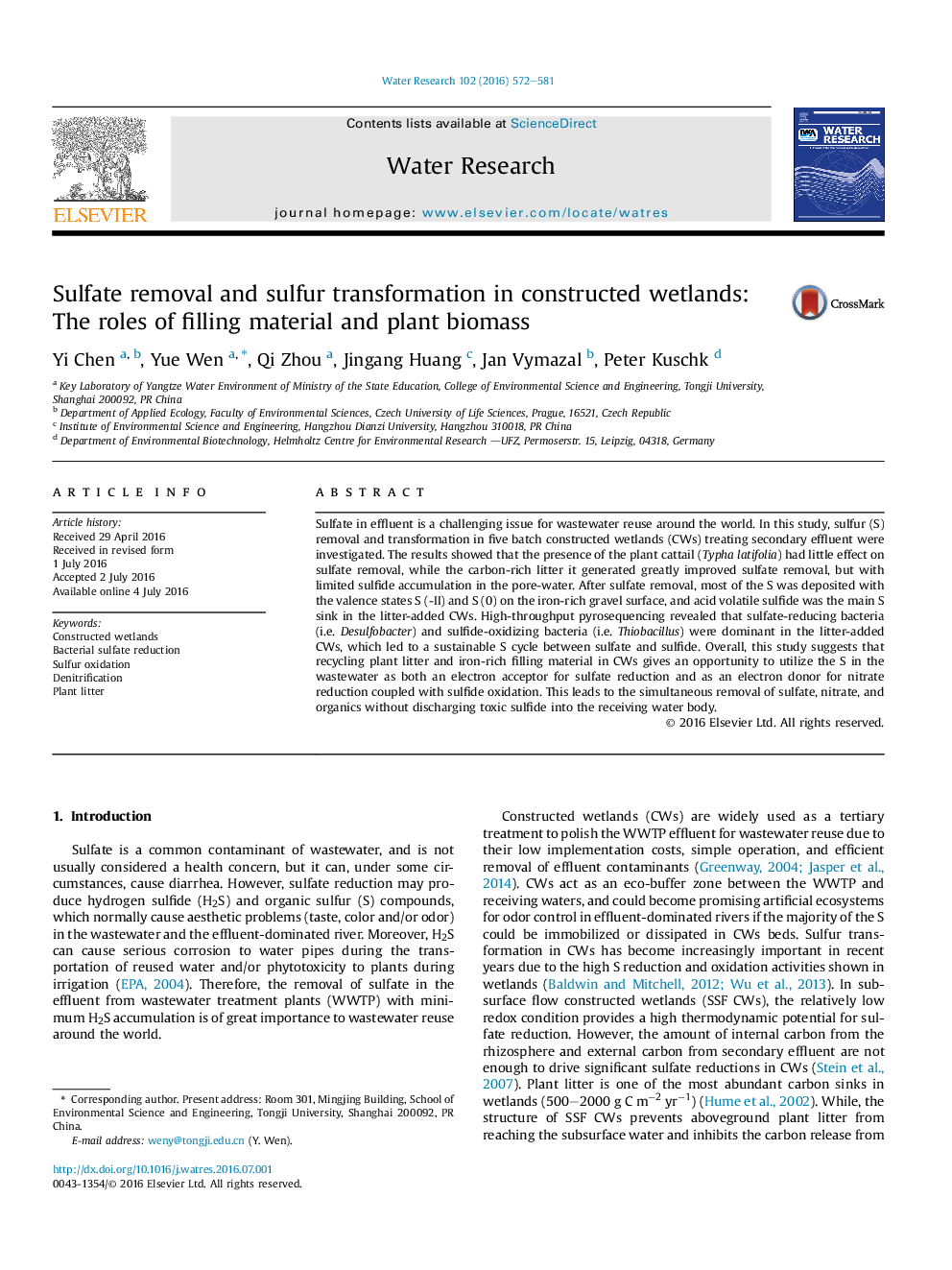| کد مقاله | کد نشریه | سال انتشار | مقاله انگلیسی | نسخه تمام متن |
|---|---|---|---|---|
| 4480888 | 1623066 | 2016 | 10 صفحه PDF | دانلود رایگان |
• Sulfur transformation processes in CWs were characterized.
• Simultaneous removal of sulfate without excess sulfide output was achieved.
• The transformed sulfate-S was mainly immobilized as acid volatile sulfide.
• The sulfide can be re-oxidized to elemental sulfur and sulfate in CWs.
• Sulfur-driven mixotrophic denitrification occurs in CWs.
Sulfate in effluent is a challenging issue for wastewater reuse around the world. In this study, sulfur (S) removal and transformation in five batch constructed wetlands (CWs) treating secondary effluent were investigated. The results showed that the presence of the plant cattail (Typha latifolia) had little effect on sulfate removal, while the carbon-rich litter it generated greatly improved sulfate removal, but with limited sulfide accumulation in the pore-water. After sulfate removal, most of the S was deposited with the valence states S (-II) and S (0) on the iron-rich gravel surface, and acid volatile sulfide was the main S sink in the litter-added CWs. High-throughput pyrosequencing revealed that sulfate-reducing bacteria (i.e. Desulfobacter) and sulfide-oxidizing bacteria (i.e. Thiobacillus) were dominant in the litter-added CWs, which led to a sustainable S cycle between sulfate and sulfide. Overall, this study suggests that recycling plant litter and iron-rich filling material in CWs gives an opportunity to utilize the S in the wastewater as both an electron acceptor for sulfate reduction and as an electron donor for nitrate reduction coupled with sulfide oxidation. This leads to the simultaneous removal of sulfate, nitrate, and organics without discharging toxic sulfide into the receiving water body.
Figure optionsDownload high-quality image (395 K)Download as PowerPoint slide
Journal: Water Research - Volume 102, 1 October 2016, Pages 572–581
